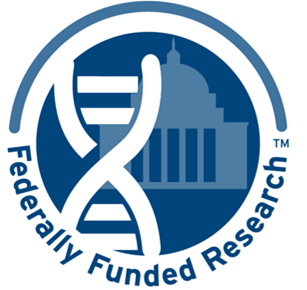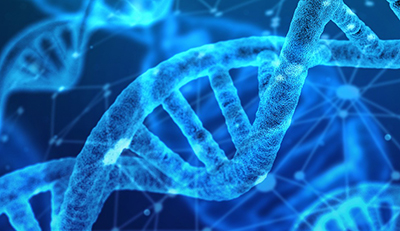Health Cognition Lab
PERSONALIZED MEDICINE – MOTIVATIONAL AND BEHAVIORAL IMPACT OF GENETIC TESTING FOR FAMILIAL CANCER
A primary goal of personalized medicine is to improve cancer outcomes through prevention and early detection. Predictive genetic testing provides the opportunity to learn in advance about the major health risks one is likely to face. For most hereditary cancers, the main recommendation following a positive test result is either accelerated screening or prophylactic surgery. In contrast, for melanoma, an aggressive and deadly form of skin cancer, genetic vulnerability (the highly penetrant p16 mutation, which confers a 76% lifetime risk to US residents) is thought to interact with personal behavior (UVR exposure) to influence disease risk. Thus, members of high-risk families are counseled to practice both primary prevention (reduce UVR exposure, prevent sunburns) and early detection (skin self-examinations, annual total body skin examinations).
Our studies were the first to prospectively examine the impact of melanoma genetic testing on prevention and screening behavior and psychological outcomes with sufficient sample size to distinguish patterns of response by both mutation status (positive vs. negative) and melanoma history (affected family members with a diagnosis of melanoma vs. unaffected family members who do not yet have a melanoma diagnosis). Overall, unaffected family members who received a positive melanoma genetic test result subsequently improved their prevention and screening behaviors to the same high level of adherence demonstrated by family members who had been diagnosed with the disease. These gains were sustained at a two-year follow-up, with multiple benefits and no increases in psychological distress reported. These findings have been influential in the development of international melanoma genetic testing guidelines.
 In the NCI-funded BRIGHT Project (Behavior, Risk Information, Genealogy and Health
Trial), we compare outcomes of melanoma genetic testing to equivalent counseling based
on family history in order to evaluate any unique outcomes resulting from the provision
of a genetic test result. What we are interested in learning is whether genetic test
reporting matters to people at highly elevated familial cancer risk, and if so, why?
Put differently, if people already know that they are at high risk from their family
history, are there any benefits to receiving a genetic test result above and beyond
the counseling and education about melanoma prevention that accompany the test report?
Do people think or feel differently if they receive a positive genetic test that indicates
a 76% lifetime chance of developing melanoma than if they receive information about
highly elevated cancer risk but no test?
In the NCI-funded BRIGHT Project (Behavior, Risk Information, Genealogy and Health
Trial), we compare outcomes of melanoma genetic testing to equivalent counseling based
on family history in order to evaluate any unique outcomes resulting from the provision
of a genetic test result. What we are interested in learning is whether genetic test
reporting matters to people at highly elevated familial cancer risk, and if so, why?
Put differently, if people already know that they are at high risk from their family
history, are there any benefits to receiving a genetic test result above and beyond
the counseling and education about melanoma prevention that accompany the test report?
Do people think or feel differently if they receive a positive genetic test that indicates
a 76% lifetime chance of developing melanoma than if they receive information about
highly elevated cancer risk but no test?
 Our most recent findings from the NCI-funded BRIGHT Project successfully disentangle
the receipt of a positive genetic test result from equivalent counseling based on
family history alone and suggest considerable informational and motivational benefit
for testing. Specifically, participants who received positive test results reported
greater motivation to reduce sun exposure (Aspinwall et al., 2018) and were objectively
less tan at the wrist one year later (Stump et al., 2020). These
Our most recent findings from the NCI-funded BRIGHT Project successfully disentangle
the receipt of a positive genetic test result from equivalent counseling based on
family history alone and suggest considerable informational and motivational benefit
for testing. Specifically, participants who received positive test results reported
greater motivation to reduce sun exposure (Aspinwall et al., 2018) and were objectively
less tan at the wrist one year later (Stump et al., 2020). These 
SAMPLE PUBLICATIONS
- Aspinwall, L.G., Drummond, D.M., Stump, T. K., Kohlmann, W.K., & Leachman, S.A. (2022). Interactive beliefs about genes and behavior predict improved sun protection following melanoma genetic counseling. Annals of Behavioral Medicine. Electronic publication February 18, 2022.
- Aspinwall, L. G., Taber, J.M., Kohlmann, W., & Bautista, L. B. (2022). Psychological aspects of hereditary cancer risk counseling and genetic testing: Toward an expanded and more equitable view. In J. Steel & B. Carr (Eds.), Psychological Aspects of Cancer, 2e, pp. 359-398. Cham, Switzerland: Springer Nature.
- Taber, J.M., Aspinwall, L. G., Drummond, D., Stump, T. K., Kohlmann, W., Champine, M., Cassidy, P. B., & Leachman, S. A. (2021).Priority of risk (but not perceived magnitude) predicts improved sun-protection behavior following genetic counseling. Annals of Behavioral Medicine, 55(1), 24-40. Electronic publication, May 16, 2020. doi: 10.1093/abm/kaaa028.
- Stump, T. K., Aspinwall, L. G, Drummond, D., Taber, J. M., Kohlmann, W., Champine, M., Cassidy, P. B., Petrie, T., & Leachman, S. A. (2020). CDKN2A testing and genetic counseling promote reductions in objectively measured sun exposure one year later. Genetics in Medicine. Electronic publication, August 2, 2019, 22(1): 26-34. PMID: 31371819. doi: 10.1038/s41436-019-0608-9.
- Aspinwall, L.G, Stump, T.K., Taber, J.M., Drummond, D., Kohlmann, W., Champine, M., & Leachman, S.A. (2018). Genetic test reporting of CDKN2A provides informational and motivational benefits for managing melanoma risk. Translational Behavioral Medicine, 8(1), 29-43.
- Taber, J. M., Aspinwall, L. G., Stump, T. K., Kohlmann, W., Champine, M., & Leachman, S. A. (2015). Genetic testing enhances understanding of risk information and acceptance of prevention recommendations compared to family history-based counseling alone. Journal of Behavioral Medicine, 38, 740-753.
- Aspinwall, L.G., Taber, J.M., Kohlmann, W., Leaf, S.L. & Leachman, S.A. (2014). Unaffected family members report improvements in daily routine sun protection 2 years following melanoma genetic testing. Genetics in Medicine, 16, 846-853. PMCID: PMC4209010.
- Aspinwall, L.G., Taber, J.M., Leaf, S.L., Kohlmann, W. & Leachman, S.A. (2013). Genetic testing for hereditary melanoma and pancreatic cancer: A longitudinal study of psychological outcome. Psycho-Oncology, 22(2), 276-289. PMID: 23382133
- Aspinwall, L.G., Taber, J.M., Leaf, S.L., Kohlmann, W. & Leachman, S.A. (2013). Melanoma genetic counseling and test reporting improve screening adherence among unaffected carriers 2 years later. Cancer Epidemiology, Biomarkers & Prevention, 22(10), 1687-1697. PMCID: PMC3837428
INTERVENTIONS WITH CHILDREN AND FAMILIES TO REDUCE SUN EXPOSURE AND PROMOTE SCREENING
 Because melanoma risk results from cumulative sun exposure, as well as sunburns, it
represents an important point of intervention, particularly for children and adolescents.
With colleagues at HCI and OHSU, we have examined the impact of melanoma genetic test reporting on children from-risk
families and developed a series of family-focused interventions to understand barriers
to child sun protection and to develop novel methods to educate families about genetic
risk and prevention. This work leverages our team's expertise in understanding health
cognitions related to perceived risk and its management with expertise on family-focused
interventions to promote medical adherence in children and adolescents.
Because melanoma risk results from cumulative sun exposure, as well as sunburns, it
represents an important point of intervention, particularly for children and adolescents.
With colleagues at HCI and OHSU, we have examined the impact of melanoma genetic test reporting on children from-risk
families and developed a series of family-focused interventions to understand barriers
to child sun protection and to develop novel methods to educate families about genetic
risk and prevention. This work leverages our team's expertise in understanding health
cognitions related to perceived risk and its management with expertise on family-focused
interventions to promote medical adherence in children and adolescents.


SAMPLE PUBLICATIONS
-
Wu, Y.P., Stump, T.K., Hay, J.L., Aspinwall, L.G., Boucher, K.B., Deboeck, .P, Grossman, D., Mooney, K., Leachman, S.A., Smith, K.R., Wankier, A.P., Brady, H.L., Hancock, S.E., Parsons, B.G., Tercyak, K.P. (2023). The Family Lifestyles, Actions and Risk Education (FLARE) Study: Protocol for a randomized controlled trial of a sun protection intervention for children of melanoma survivors . Contemporary Clinical Trials, 131. Electronic publication, July 5, 2023.
- Wu, Y.P., Aspinwall, L.G., Parsons, B., Stump, T.K., Nottingham, K., Kohlmann, W., Champine, M., Cassidy, P., & Leachman, S.A. (2020). Parent and child perspectives on family interactions related to melanoma risk and prevention after CDKN2A/p16 testing of minor children. Journal of Community Genetics. Electronic publication, January 18, 2020, doi: 10.1007/s12687-020-00453-9.
- Wu, Y.P., Boucher, K., Hu, N., Hay, J., Kohlmann, W., Aspinwall, L. G., Bowen, D.J., Parsons, B.G., Nagelhout, E.S., Grossman, D., Mooney, K., Leachman, S. A., & Tercyak, K.P. (2020). A pilot study of a telehealth family focused melanoma preventive intervention for children with a family history of melanoma. Psycho-Oncology, 29, 148-155.
-
Parsons, B.G., Hay, J.L., Aspinwall, L.G., Zaugg, K., Zhu, A., Mooney, R., Klein, S.Z., Grossman, D., Leachman, S.A., Wu, Y.P. (2019). Understanding skin screening practices among children at elevated risk for melanoma to inform interventions for melanoma prevention and control. Journal of Cancer Education, 1-6. Electronic publication, February 15, 2019. doi: 10.1007/s13187-019-01489-3
-
Wu, Y. P., Parsons, B. G., Aspinwall, L. G., Hay, J. L, Boucher, K. M., Caputo, H., Mooney, R., Grossman, D., & Leachman, S. A. (2019). Parent and child perspectives on perceived barriers to child sun protection and their association with sun protection strategies among children of melanoma survivors. Pediatric Dermatology, 36, 317-323.
- Stump , T. K., Aspinwall, L.G., Kohlmann, W., Champine, M., Hauglid, J., Wu, Y., Scott, E., Cassidy, P., Leachman, S.A. (2018). Genetic test-reporting of melanoma risk in minors may improve sun protection without inducing distress. Journal of Genetic Counseling, https://doi.org/10.1007/s10897-017-0185-5.
- Wu, Y.P., Aspinwall, L.G., Nagelhout, E. Kohlmann, W., Kaphingst, K.A., Homberger, S., Perkins, R.D., Grossman, D., Harding, G., Cassidy, P., & Leachman, S.A. (2016). Development of an educational program integrating concepts of genetic risk and preventive strategies for children with a family history of melanoma. Journal of Cancer Education. Electronic publication, November 26, 2016. doi:10.1007/s13187-016-1144-9
- Wu, Y.P., Nagelhout, E., Aspinwall, L.G., Boucher, K.N., Parsons, B.G., Kohlmann, W., Kaphingst K.A., Homburger S., Perkins R.D., Grossman D., Harding G., & Leachman S.A. (2017, October). A novel educational intervention targeting melanoma risk and prevention knowledge among children with a familial risk for melanoma. Patient Education and Counseling. doi: 10.1016/j.pec.2017.10.008.
- Wu, Y.P., Aspinwall, L.G., Conn, B.M., Stump, T.K., Grahmann, B., & Leachman, S.A. (2016). A systematic review of interventions to improve adherence to melanoma preventive behaviors for individuals at elevated risk. Preventive Medicine, 88, 153-167.
- Wu, Y.P., Aspinwall, L.G., Michaelis, T.C., Stump, T., Kohlmann, W., & Leachman, S.A. (2016). Discussion of photoprotection, screening, and risk behaviors with children and grandchildren after melanoma genetic testing. Journal of Community Genetics, 7, 21-31. doi:10.1007/s12687-015-0243-3. Electronic publication date, June 23, 2015.
- Wu, Y. P., Parsons, B. G., Mooney, R., Aspinwall, L. G., Cloyes, K., Hay, J. L., Kohlmann, W., Grossman, D., Leachman, S. A. (2018). Barriers and facilitators to melanoma prevention and control behaviors among at-risk children. Journal of Community Health, 43(5), 993-1001. Electronic publication, April 6, 2018, doi: 10.1007/s10900-018-0516-y
- Taber, J. M., Aspinwall, L. G., Kohlmann, W., Dow, R., & Leachman, S. A. (2010). Parental preferences for CDKN2A/p16 genetic testing of minors. Genetics in Medicine, 12, 823-838. doi: 10.1097/GIM.0b013e3181f87278.
HOW DO PEOPLE THINK ABOUT GENETIC RISK?
LEGAL AND SOCIAL IMPLICATIONS, IMPLICATIONS FOR PERSONAL ACTION AND RESPONSIBILITY
 As more diseases are identified for which genetic vulnerability interacts with individual
behavior and/or environmental exposure, it will become increasingly important to study
how people understand and manage aspects of their disease risk that are amenable to
personal control and, in particular, how genetic explanations for disease risk and
other outcomes influence perceptions of personal agency and responsibility. We have
examined this question in diverse settings, including medicine and law. As suggested
above, members of high-risk families have the opportunity to proactively manage their
melanoma risk by reducing UVR exposure; however, studies using hypothetical scenarios
with different stated genetic contributions to disease (e.g., levels of genetic penetrance,
characterization of a mutation as a "dominant gene") suggest that people may reach
fatalistic conclusions about genetic vulnerability that reduce motivation to engage
in disease prevention behaviors. Thus, we assessed the impact of melanoma genetic
test reporting on control beliefs, cancer fatalism, and other important outcomes.
As more diseases are identified for which genetic vulnerability interacts with individual
behavior and/or environmental exposure, it will become increasingly important to study
how people understand and manage aspects of their disease risk that are amenable to
personal control and, in particular, how genetic explanations for disease risk and
other outcomes influence perceptions of personal agency and responsibility. We have
examined this question in diverse settings, including medicine and law. As suggested
above, members of high-risk families have the opportunity to proactively manage their
melanoma risk by reducing UVR exposure; however, studies using hypothetical scenarios
with different stated genetic contributions to disease (e.g., levels of genetic penetrance,
characterization of a mutation as a "dominant gene") suggest that people may reach
fatalistic conclusions about genetic vulnerability that reduce motivation to engage
in disease prevention behaviors. Thus, we assessed the impact of melanoma genetic
test reporting on control beliefs, cancer fatalism, and other important outcomes.
Here are some of our findings:
- In contrast to concerns about genetic determinism and corresponding fatalism with respect to prevention, our findings suggested that unaffected carriers generally reported increases in perceived control over the development of melanoma and decreased belief that the development of disease was inevitable (Aspinwall et al., 2015).
- Loss frames may be especially motivating to people at high risk as they do not wish to lose their opportunity to manage the part of their risk that may be amenable to behavioral control (Taber & Aspinwall, 2015).
- In both the domains of medicine and law, genetic explanations may carry particular weight, motivating acceptance of risk information and corresponding management recommendations (Taber et al., 2015) and influencing judicial reasoning about responsibility, punishment, and recidivism in complex ways (Aspinwall, Brown, & Tabery, 2012; see also Brown, Tabery, & Aspinwall, 2016).
- In particular, the belief that unhealthful behaviors can amplify one's genetic risk seems to be especially motivating of sustained changes in prevention behavior (Aspinwall, Drummond et al., 2022).
Current projects involve understanding mental models of genetic risk and its relation to personal behavior and environmental exposure (gene x behavior interactions, Aspinwall, Drummond et al., 2022), how people think about new genetic technologies (biomarker testing, epigenetic changes), and how people think about familial transmission of both disease risk and protective factors.
SAMPLE PUBLICATIONS
- Aspinwall, L.G., Drummond, D.M., Stump, T. K., Kohlmann, W.K., & Leachman, S.A. (2022). Interactive beliefs about genes and behavior predict improved sun protection following melanoma genetic counseling. Annals of Behavioral Medicine. Electronic publication February 18, 2022.
- Aspinwall, L.G., Brown, T.R., & Tabery, J. (2012). The double-edged sword: Does biomechanism increase or decrease judges’ sentencing of psychopaths? Science, 337(6096), 846-849. PMCID: not available
- Aspinwall, L.G., Stump, T.K., Taber, J.M., Kohlmann, W., Leaf, S.L. & Leachman, S.A. (2015). Impact of melanoma genetic test reporting on perceived control over melanoma prevention. Journal of Behavioral Medicine, 38, 754-765. PMCID: PMC4568125
- Taber, J.M. Aspinwall, L.G., Stump, T.K., Kohlmann, W., Champine, M. & Leachman, S.A. (2015). Genetic testing enhances understanding of risk information and acceptance of prevention recommendations compared to family history-based counseling alone. Journal of Behavioral Medicine, 38, 740-753. PMID: 26178773. PMCID: PMC4568160
- Taber, J.M. & Aspinwall, L.G. (2015). Framing recommendations to promote prevention behaviors among people at high risk: A simulation study of responses to melanoma genetic test reporting. Journal of Genetic Counseling, 24, 771-782. PMCID: not available
- Brown, T. R., Tabery, J., & Aspinwall, L. G. (2016). Understanding validity in empirical legal research: The case for methodological pluralism in assessing the impact of science in court. Hastings Law Journal, 67(4), 1068-1085.
- Taber, J. M., Aspinwall, L. G., Heichman, K. A., & Kinney, A. Y. (2014). Preferences for blood-based colon cancer screening differ by race/ethnicity. American Journal of Health Behavior, 38, 351-361.
- Leaf, S. L., Aspinwall, L. G., & Leachman, S. A. (2010). God and agency in the era of molecular medicine: Religious beliefs predict sun-protection behaviors following melanoma genetic test reporting. Archive for the Psychology of Religion, 32, 87-112.
- Aspinwall, L. G., Leaf, S. L., & Leachman, S. A. (2012). Meaning and agency in the context of genetic testing for familial cancer. In P. T. P. Wong (Ed.), The human quest for meaning: Theories, research, and applications (2nd Edition, pp. 457-494). New York: Routledge.
PROACTIVE COPING
My overall research program focuses on the social-cognitive processes involved in representing potential future events and outcomes and, specifically, how people's beliefs, feelings, and expectations about the nature and modifiability of such outcomes are related to actions undertaken to prevent or detect problems early in their course, a process termed proactive coping (Aspinwall & Taylor, 1997). These ideas about proactive coping and self-regulatory processes have been used to develop interventions in multiple areas, including diabetes management, psychological adaptation to climate change, and optimal aging, as well as to inform social psychological studies of how members of stigmatized groups proactively anticipate and manage discrimination. The study of future-oriented thinking, self-regulation and health affords an opportunity to understand how people may proactively utilize new predictive and diagnostic technologies to manage both potential and actual threats to health. Understanding how to optimize these processes earlier in life for interventions targeted to children and families represents an important extension of this work.
- Aspinwall, L.G. & Taylor, S.E. (1997). A stitch in time: Self-regulation and proactive coping. Psychological Bulletin, 121(3), 417-436. PMCID: not applicable
- Aspinwall, L.G. (2005). The psychology of future-oriented thinking: From achievement to proactive coping, adaptation, and aging. Motivation and Emotion, 29(4), 203-235. PMCID: not applicable
- Aspinwall, L. G. (2011). Future-oriented thinking, proactive coping, and the management of potential threats to health and well-being. In S. Folkman (Ed.), The Oxford handbook of stress, health and coping (pp. 334-365). New York: Oxford University Press.
POSITIVE BELIEFS AND HEALTH
Consistent with our interest in the proactive management of negative events and information, we have also investigated a) how positive thoughts and feelings, such as optimism and positive mood, are related to the processing of health risks, and b) the multiple pathways through which positive thoughts and feelings may be related to physical health outcomes. Our work has demonstrated that many different positive beliefs (dispositional optimism, experimentally induced self-affirmation opportunities) enhance both attention to and unbiased processing of information about threats to health and well-being, and this work has been used to inform successful interventions (see Armitage, Harris, & Arden, 2011, Health Psychology, for a clinical trial using our self-affirmation manipulation to reduce alcohol consumption). Our work has also identified pervasive assumptions about positive states and how they work (e.g., the mistaken belief that they promote a blithe inattention to -- or even active disregard of -- important negative information) that play a role in how both scientists and laypeople think about these topics and their implications for intervention.
SAMPLE PUBLICATIONS
- Johnson, K.T., Williams, P.G., Aspinwall, L.G., & Curtis, B.J. (2022). Resilience to distress-related sleep disturbance: Examination of early pandemic coping and affect. [Special Issue: Development of Resilience in Response to Stress and Trauma]. Health Psychology. Electronic publication February 24, 2022.
- Huynh, S., Stefanucci, J. K., & Aspinwall, L. G. (2014). Self-affirmation counters the effects of self-regulatory resource depletion on height perception. Journal of Experimental Social Psychology, 52, 96-100.
- Huynh, S., Stefanucci, J. K., & Aspinwall, L. G. (2014). Self-affirmation counters the effects of self-regulatory resource depletion on height perception. Journal of Experimental Social Psychology, 52, 96-100.
- Aspinwall, L. G., & Pengchit, W. (2013). Positive psychology. In M. D. Gellman & J. R. Turner (Eds.), Encyclopedia of behavioral medicine, Part 16, 1511-1517. New York: Springer.
- Aspinwall, L.G. & Tedeschi, R.G. (2010). The value of Positive Psychology for Health Psychology: Progress and pitfalls in examining the relation of positive phenomena to health. Annals of Behavioral Medicine, 39(1), 4-15.
- Aspinwall, L. G., & Tedeschi, R. G. (2010). Of babies and bathwater: A reply to Coyne and Tennen's views on positive psychology and health. Annals of Behavioral Medicine, 39, 27-34. doi: 10.1007/s12160-010-9155-y.
- Aspinwall, L.G. & MacNamara, A. (2005). Taking positive changes seriously: Toward a positive psychology of cancer survivorship and resilience. Cancer, 104(11 Suppl), 2549-2556. PMCID: not applicable
- Aspinwall, L. G., Sechrist, G. B., & Jones, P. (2005). Expect the best and prepare for the worst: Anticipatory coping and preparations for Y2K. Motivation and Emotion, 29, 357-388.
- Aspinwall, L. G., & Staudinger, U. M. (Eds.) (2003). A psychology of human strengths: Fundamental questions and future directions for a positive psychology. Washington, DC: APA Books.
- Aspinwall, L. G., & Leaf, S. L. (2002). In search of the unique aspects of hope: Pinning our hopes on positive emotions, future-oriented thinking, hard times, and other people. Psychological Inquiry, 13, 276-288.
- Aspinwall, L. G., & Richter, L. (1999). Optimism and self-mastery predict more rapid disengagement from unsolvable tasks in the presence of alternatives. Motivation and Emotion, 23, 221-245.
- Aspinwall , L. G. (1998). Rethinking the role of positive affect in self-regulation. Motivation and Emotion, 22, 1-32.
- Reed, M.B. & Aspinwall, L.G. (1998). Self-affirmation reduces biased processing of health-risk information. Motivation and Emotion, 22(2), 99-132.
- Aspinwall, L.G. & Brunhart, S.M. (1996). Distinguishing optimism from denial: Optimistic beliefs predict attention to health threats. Personality and Social Psychology Bulletin, 22(10), 993-1003.
- Taylor, S. E., Kemeny, M. E., Aspinwall, L. G., Schneider, S. G., Rodriguez, R., & Herbert, M. (1992). Optimism, coping, psychological distress, and high-risk sexual behavior among men at risk for Acquired Immunodeficiency Syndrome (AIDS). Journal of Personality and Social Psychology, 63, 460-473.
- Aspinwall, L. G., & Taylor, S. E. (1992). Modeling cognitive adaptation: A longitudinal investigation of the impact of individual differences and coping on college adjustment and performance. Journal of Personality and Social Psychology, 63, 989-1003.
- ABC – Applied and Basic Cognition Lab
- CALM Lab
- CAN Lab
- ConVExA Lab
- Developmental Adaptations, Stress, and Health (DASH) Collaborative
- Executive Lab
- Fred Rhodewalt Social Psychology Winter Conference
- HEART Lab
- Health Cognition Lab
- Hidden Talents Lab
- Jon's Dynamical Systems Lab
- Language and Memory Aging (LaMA) Lab
- Life-Span Development and Adaptation Lab (Adapt Lab)
- Peace and Intergroup Conflict (PICL) Lab
- READY
- Research Network on Adaptations to Childhood Stress
- Restoration And Stress (REST) Laboratory
- Risk To Resilience Lab
- Social Development Lab
- Spatial Cognition And Navigation Project
- Spatial Transformations Experiment
- Statistical Consulting
- Systems 'N Coffee
- Type 1 Diabetes ADAPT Project
- Treatment Mechanisms, Community Empowerment, & Technology Innovations Lab
- U-CLIMB
- University of Utah Usability Lab
- VAAST Lab
FACULTY
 |
Lisa Aspinwall, PhDCurrent Position: Professor
|
CURRENT STUDENTS
CURRENT COLLABORATORS
 |
Teneille Brown, JD
Institution: S. J. Quinney College of Law, University of Utah |
 |
Wendy Kohlmann, MSInstitution: Huntsman Cancer Institute, University of Utah; U.S. Department Of Veterans Affairs |
 |
Sancy Leachman, M.D., PhD.
Institution: OHSU, School of Medicine |
 |
Monika Lohani
Institution: Psychology, University of Utah |
 |
Larissa A. McGarrity, PhD
Institution: Physical Medicine and Rehabilitation, University of Utah |
 |
Juliana S. Simonetti, MD
Institution: Internal Medicine & Surgery, Comprehensive Weight Management Program, University of Utah |
 |
Tammy K. Stump, PhD
Institution: Dermatology, Huntsman Cancer Institute, University of Utah |
 |
James Tabery, PhD
Institution: Philosophy, Internal Medicine, University of Utah |
 |
Yelena Wu, Ph.DInstitution: Department of Dermatology, Huntsman Cancer Institute, University of Utah |
LAB ALUMNI
 |
Danielle Drummond, PhDCurrent Position: User Experience Researcher, |
 |
Tammy Stump, PhDCurrent Position: Research Associate |
 |
Jennifer Taber, PhDCurrent Position: Associate Professor |
 |
Watcharaporn Boonyasiriwat, PhDCurrent Position: Assistant Professor of Psychology |
 |
Samantha Leaf, PhDCurrent Position: Vice President and Senior Research Scientist |
 |
Mark B. Reed, PhDCurrent Position: Professor, Health Promotion and Behavioral Science & Associate Vice President for
Research Operations |
 |
Douglas L. Hill, PhDCurrent Position: Social Psychologist |
LAB LOCATION
Social and Behavior Science Tower (BEHS) Room 816
Research & other Teaching Resources
 |
Genetic Science Learning CenterMaking science and health easy for everyone to understand. |


